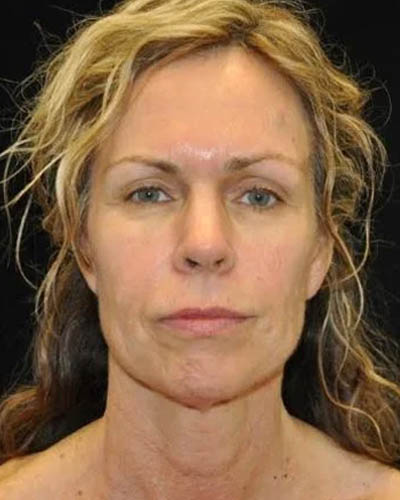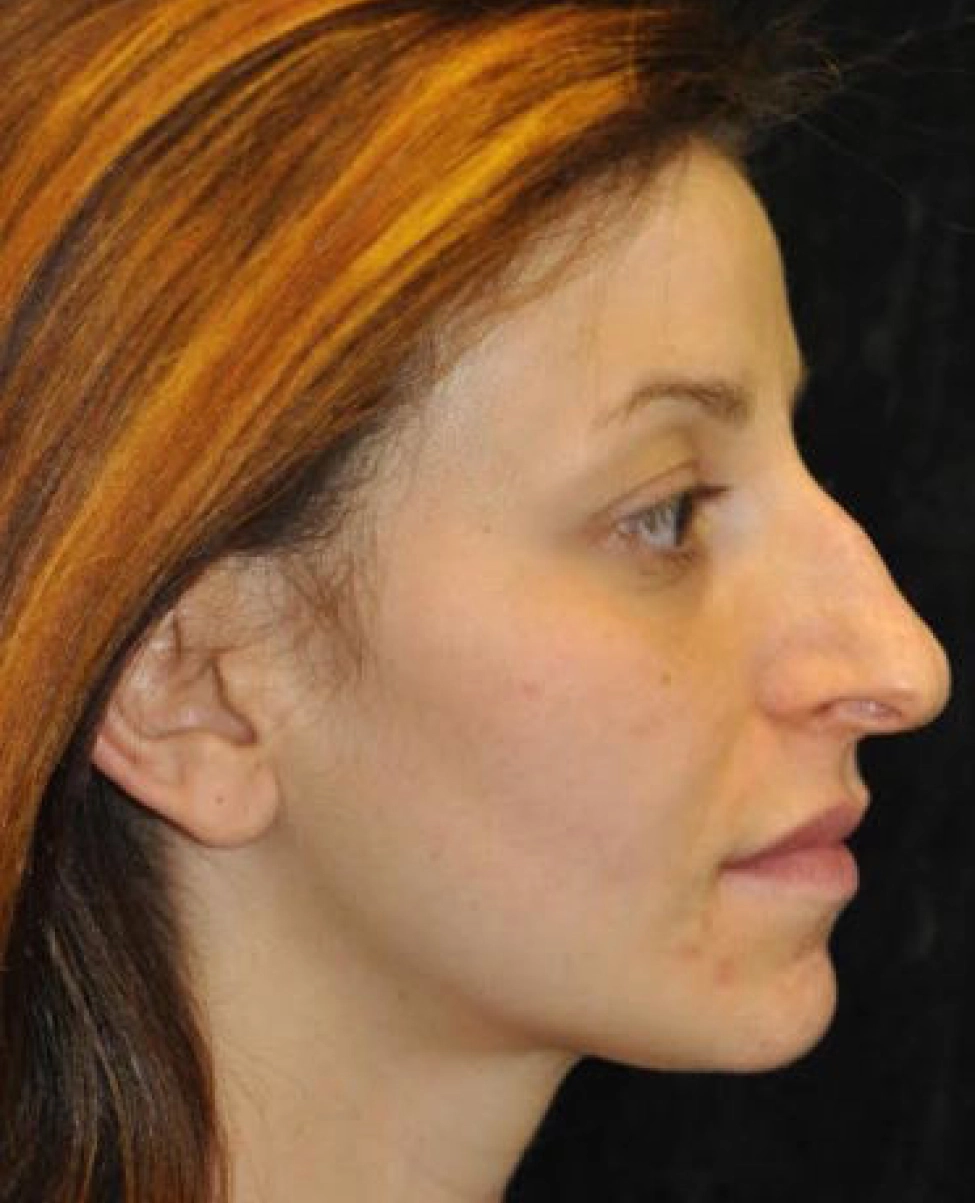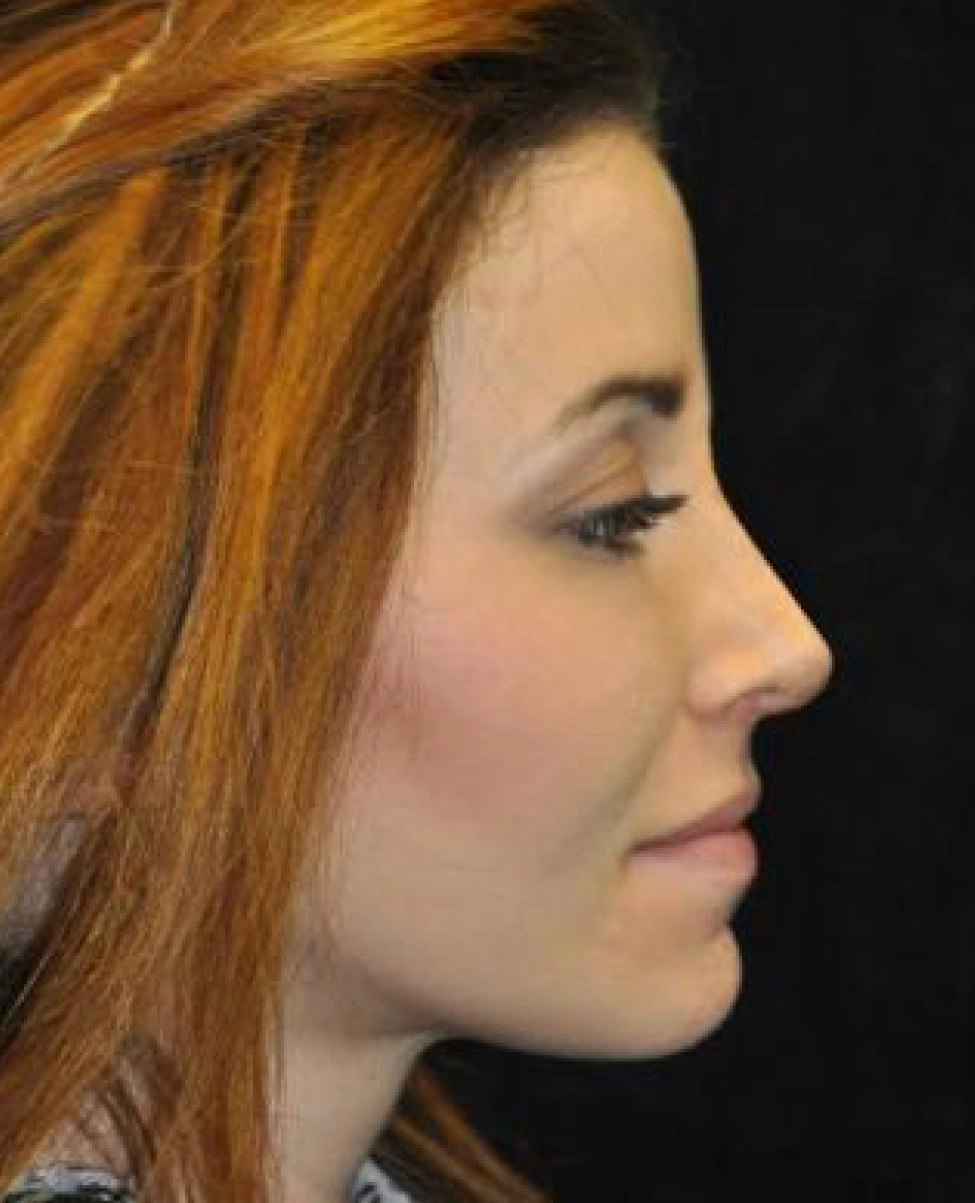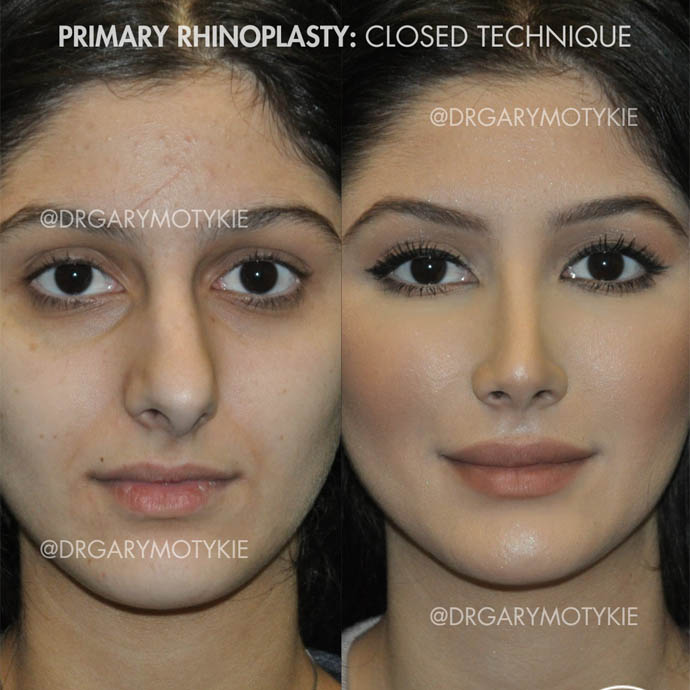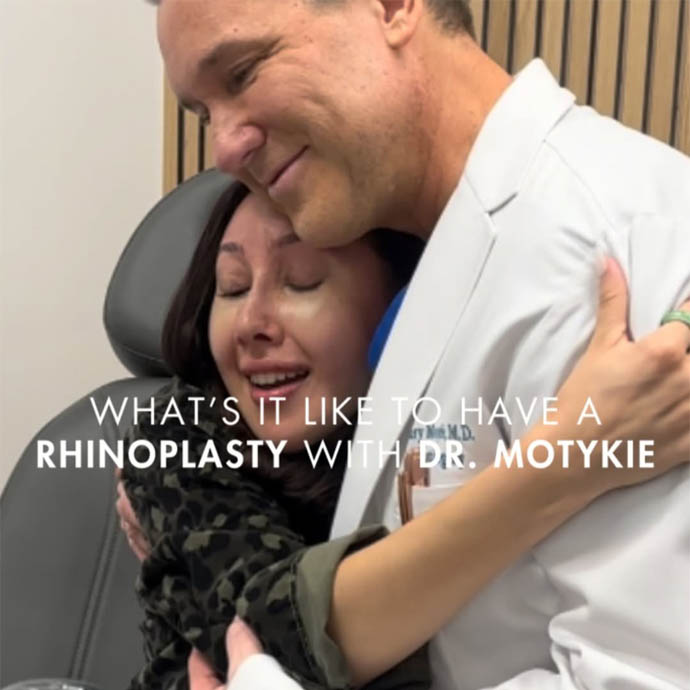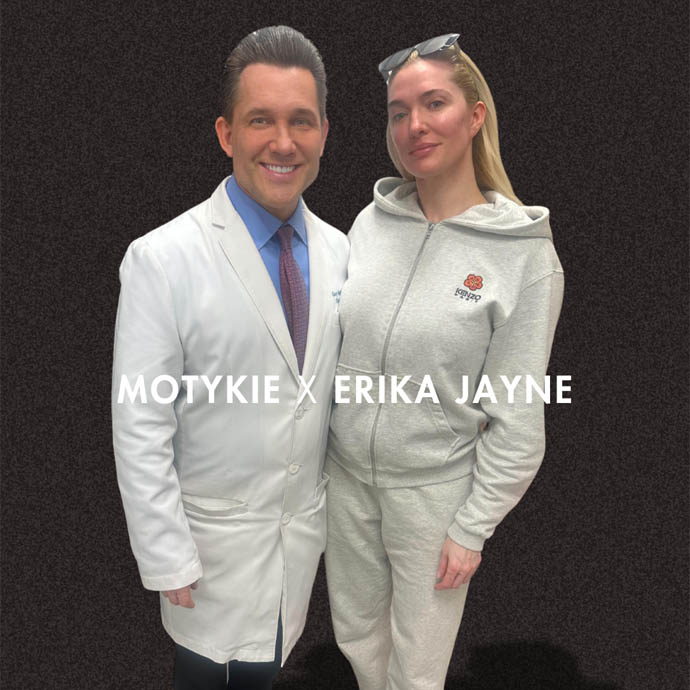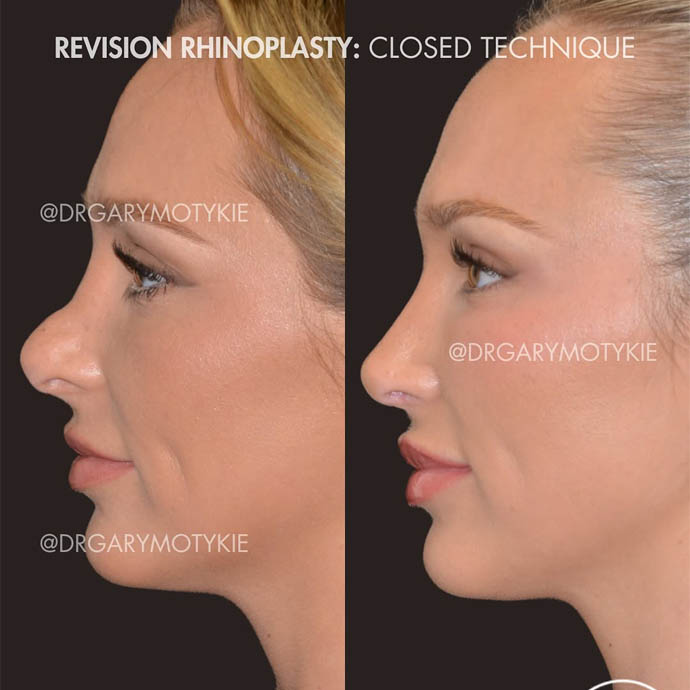By Gary Motykie, MD
Breast augmentation is a popular cosmetic procedure that many individuals consider to enhance their physical appearance. One of the crucial aspects of this surgery is the choice of incision type, as it significantly impacts the outcome, healing, and scarring. Understanding the various breast augmentation incision types can help individuals make informed decisions, ensuring a satisfying experience and aesthetic result. Board-certified plastic surgeon Dr. Gary Motykie performs breast augmentation for patients in Beverly Hills, West Hollywood, Los Angeles, and surrounding locations.
Understanding the Inframammary Incision Placement
The inframammary incision is a popular choice for breast augmentation due to its strategic placement along the natural crease under the breast. This location allows the scar to remain discreet, often hidden within the breast fold. One of the significant benefits of this incision type is the direct access it provides to the breast tissue, facilitating precise implant placement.
Surgeons often prefer the inframammary approach because it allows for a straightforward and controlled procedure. This method reduces the risk of complications, such as infection, and generally results in a smoother recovery process with minimal scarring. The incision’s position also supports the breast tissue naturally, which can enhance the overall aesthetic outcome.
For patients, the inframammary incision offers several advantages, including a hidden scar and a more natural look and feel. This method is particularly beneficial for those who are concerned about visible scarring or who desire larger implants, as the incision can be extended if necessary without significantly affecting the final appearance. Additionally, the inframammary approach is versatile, accommodating various implant sizes and types, which provides flexibility in achieving the desired breast augmentation results.
Advantages and Considerations of Periareolar Incisions
Periareolar incisions involve creating a cut around the lower half of the areola, the pigmented area encircling the nipple. This method is particularly appealing due to the scar’s potential to blend with the natural color transition of the areola, making it less noticeable over time. Surgeons favor this technique for its strategic access to the breast tissue, allowing for precise implant placement, which can be especially beneficial when combining augmentation with a breast lift.
One significant advantage of the periareolar incision is its ability to offer a comprehensive view of the breast tissue, facilitating meticulous implant positioning. This precise approach can enhance the overall aesthetic outcome, contributing to a natural look and feel. Additionally, the location of the incision can make it easier for the surgeon to manipulate the breast tissue, which is advantageous when performing simultaneous procedures like a lift.
However, it’s important to consider potential drawbacks. The periareolar incision may pose a slightly higher risk of complications, such as alterations in nipple sensation or challenges with breastfeeding. These risks arise due to the incision’s proximity to the milk ducts and nerve endings. It’s crucial to have a detailed discussion with a qualified surgeon to understand these risks and evaluate whether this incision type aligns with your surgical goals and lifestyle.
Despite these considerations, the periareolar approach remains a popular choice for those seeking a balance between effective implant placement and minimal scarring. The unique positioning of the incision allows for a discreet scar that can be easily concealed by the natural color of the areola, making it a viable option for many individuals seeking breast augmentation.
Exploring the Transaxillary Incision Option
The transaxillary incision involves making a cut in the armpit, which allows for breast augmentation without any visible scarring on the breast itself. This technique is particularly appealing to those who wish to avoid scars on the breast, as the incision is well-hidden within the natural folds of the armpit.
During the procedure, the surgeon inserts the implants through a tunnel created from the armpit to the breast. While this method can effectively conceal scars, it requires a high level of precision and expertise. The complexity of the transaxillary approach means that choosing a highly skilled and experienced surgeon is crucial to ensure proper implant placement and to minimize the risk of complications.
Patients who opt for the transaxillary incision may experience a longer recovery period compared to other incision types, due to the extensive tunneling process. Potential complications include implant asymmetry or malposition, which underscores the importance of selecting a qualified surgeon familiar with this technique.
Despite these challenges, many individuals find the transaxillary incision appealing due to the lack of visible scarring on the breast. This method can be particularly beneficial for those who prioritize maintaining a natural appearance and minimizing signs of surgical intervention. However, it’s essential to have a thorough consultation with a board-certified plastic surgeon to discuss the potential risks and benefits, as well as to determine if the transaxillary incision is the right choice for your specific needs and goals.
Overview of the Transumbilical (TUBA) Incision Technique
The transumbilical (TUBA) incision technique is a highly innovative approach to breast augmentation. By making a small incision in the belly button, surgeons can insert the breast implants through the navel, effectively leaving no visible scars on the breasts. This method is particularly appealing to those who prioritize maintaining a natural appearance without any signs of surgical intervention on the breast itself.
One of the primary benefits of the TUBA technique is its ability to completely conceal surgical scars, making it a desirable option for patients concerned about visible scarring. The procedure involves creating a tunnel from the navel to the breast, through which the implants are carefully positioned. This approach can be less invasive to the breast tissue and potentially result in a quicker recovery time for some patients.
However, the TUBA method also presents unique challenges. The tunnel created from the navel to the breast requires precise navigation, necessitating a surgeon with specialized expertise in this technique. Due to the complexity of the procedure, there is a higher risk of complications such as improper implant placement or asymmetry if not performed correctly. Additionally, this technique may not be suitable for everyone, especially those requiring larger implants or possessing certain anatomical considerations that complicate the tunneling process.
Patients interested in the TUBA incision should thoroughly discuss their suitability with a board-certified plastic surgeon. The surgeon will evaluate individual anatomy and goals to determine if this innovative technique is the best fit. Understanding both the advantages and potential challenges of the TUBA incision can help individuals make a well-informed decision about their breast augmentation options.
Choosing the Right Incision Type Based on Your Needs
Choosing the right incision type for breast augmentation involves considering several critical factors. First, think about your preferences regarding scar visibility. If you prioritize having no visible scars on your breasts, options like the transaxillary or transumbilical (TUBA) incisions might be appealing. On the other hand, if you are comfortable with a scar that blends with the natural lines of your body, the inframammary or periareolar incisions could be more suitable.
The desired size and shape of your implants also play a significant role in determining the most appropriate incision type. Larger implants or those requiring precise placement may benefit from the direct access provided by the inframammary or periareolar incisions. Additionally, if you are combining augmentation with other procedures like a breast lift, the periareolar approach might offer the best results due to its strategic placement around the areola.
Your anatomical considerations are equally important. Factors like the natural fold of your breast, the size of your areola, and the elasticity of your skin can influence the effectiveness and aesthetic outcome of each incision type. It’s essential to discuss these aspects with a board-certified plastic surgeon who can provide personalized recommendations based on your unique anatomy and goals.
Ultimately, the choice of incision should align with your overall objectives for the surgery, whether they are to minimize visible scarring, achieve a particular implant size or shape, or address specific anatomical features. A thorough consultation with a skilled and experienced surgeon will ensure that your preferences and needs are fully understood, guiding you toward the best incision type for your breast augmentation.
Post-Operative Care and Scar Management Tips
Following breast augmentation, diligent post-operative care is critical for optimal healing and minimal scarring. Adhering to your surgeon’s specific aftercare instructions is paramount. This often includes avoiding strenuous activities, wearing supportive bras, and managing any discomfort with prescribed pain relief.
To enhance scar healing, several scar management strategies can be implemented. Silicone gel sheets and topical treatments are widely recommended by surgeons for their effectiveness in reducing scar visibility. Additionally, laser therapy can be an option for those seeking more advanced scar minimization techniques.
Protecting the incision site from sun exposure is crucial, as UV rays can darken scars, making them more noticeable. Applying a broad-spectrum sunscreen or keeping the area covered when outdoors can significantly improve the healing process. Keeping the incision clean and moisturized also aids in reducing scar formation and promotes faster recovery.
Regular follow-up appointments with your surgeon are essential to monitor the healing progress and address any concerns promptly. By combining these scar management strategies with your surgeon’s personalized advice, you can achieve the best possible results. Proper care and attention during the recovery period play a vital role in ensuring a smooth healing journey and a more aesthetically pleasing outcome.
Contact Beverly Hills Board Certified Plastic Surgeon Dr. Gary Motykie to Schedule a Consultation
Click Here for Virtual Consultation
Click Here to Schedule a In Office Consultation
To see more services and treatments provided by Board Certified Plastic Surgeon, Dr. Motykie in Beverly Hills | Los Angeles | West Hollywood, CA and his team please visit:


